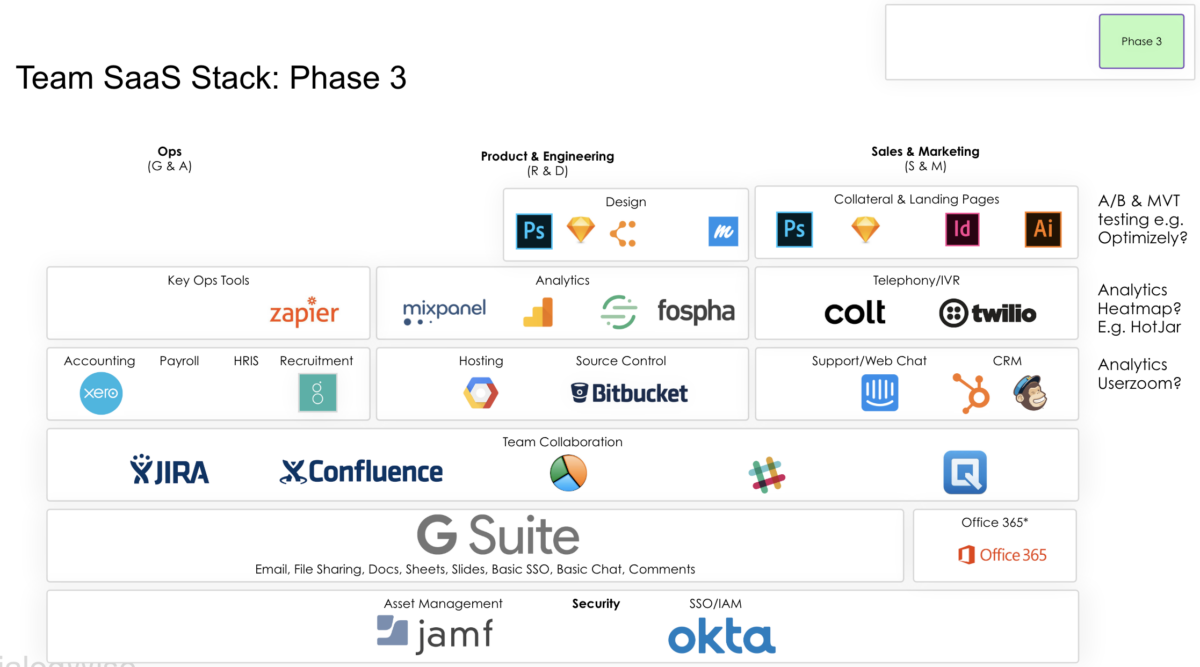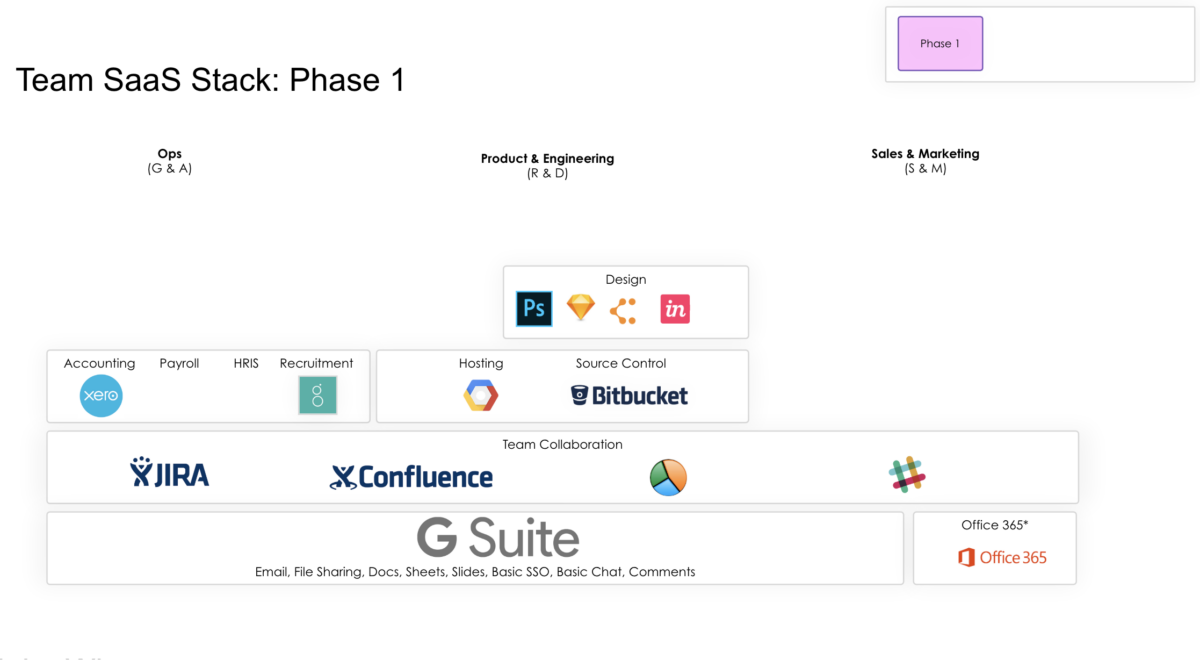So you have launched. You figured out how to make money and you are ready to grow. A good tech stack for growth businesses is depicted in the diagram. Gowing the business usually requires more people. So your tech stack will need to expand to include user management tools. My guidance here is to make sure you figured out what’s available from Gsuite or Office 365 before adding new complexity. By the way, you should only use either Gsuite or Office 365. Never both. Remember to always avoid complexity. If you like us and many other businesses, you will have Macs and Windows. You should also understand Gsuite or Office 365 offering for user kit management before adding new tools. As a growing business, you will consider adding new customer channels. We added fairly quickly telephony and webchat and also integrations to other (non-core) services. You don’t want to build any of this unless it’s your USP which is very unlikely. Finally, remember to constantly review your technology stack to continuously remove legacy.


